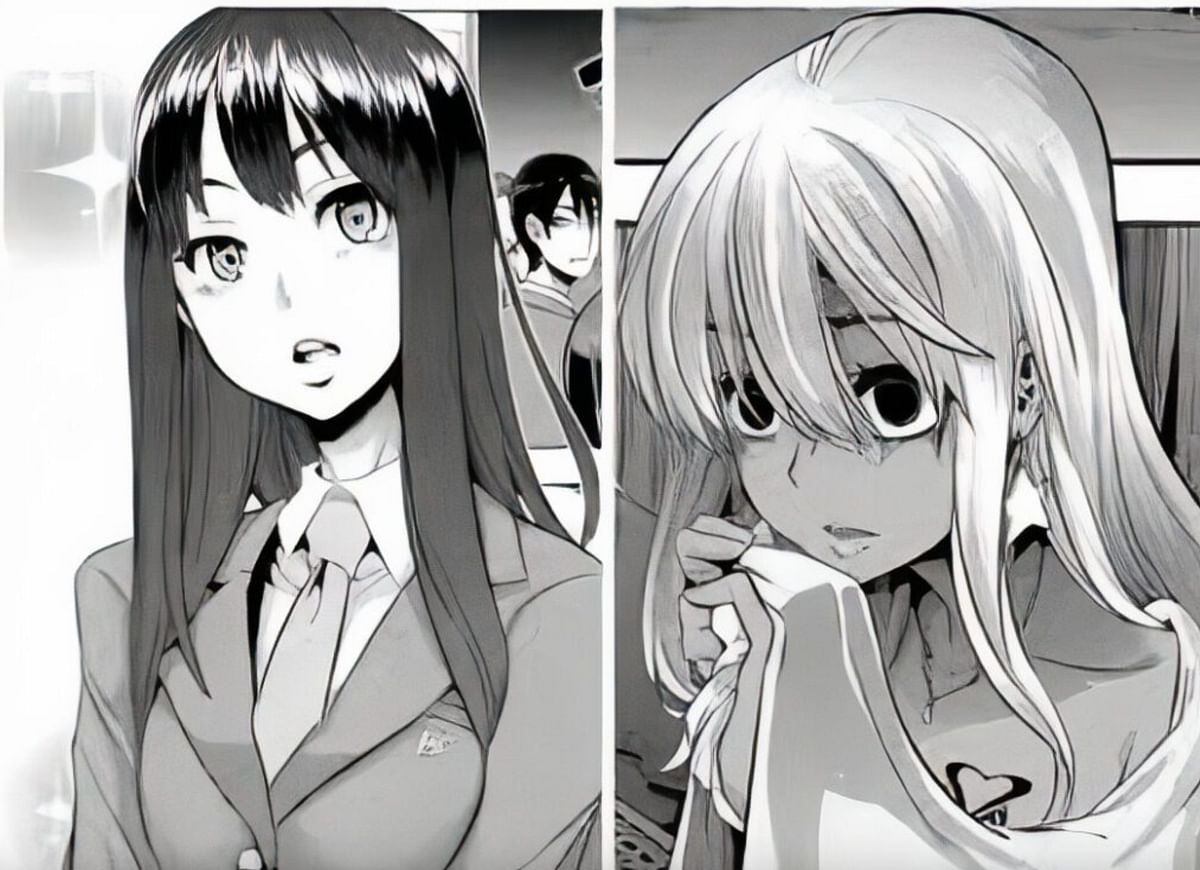Mato Seihei no Slave manga plunges readers into a world of complex power dynamics and morally gray characters. It’s not your typical shonen jump fare; expect twists, turns, and a healthy dose of questionable choices from both heroes and villains. Prepare for a wild ride exploring themes of slavery, rebellion, and the blurry lines between right and wrong, all wrapped up in a visually stunning package.
This exploration delves into the manga’s genre, character analysis, plot structure, artistic style, cultural context, and reader reception. We’ll dissect the protagonist’s motivations, analyze the antagonist’s schemes, and examine the manga’s unique artistic choices that contribute to its overall impact. Get ready to uncover the secrets and complexities of this captivating series.
Mato Seihei no Slave: A Deep Dive into the Manga: Mato Seihei No Slave Manga
Mato Seihei no Slave, a manga that’s been causing a stir, blends fantasy, action, and romance with a unique power dynamic at its core. This analysis delves into the manga’s genre, themes, character development, plot structure, artistic style, cultural context, and reader reception, offering a comprehensive look at what makes this series tick.
Genre and Themes of “Mato Seihei no Slave” Manga
The manga primarily falls under the harem genre, characterized by a male protagonist surrounded by multiple female characters who develop romantic interests in him. However, it significantly deviates from typical harem tropes by incorporating elements of fantasy, action, and reverse-harem dynamics. Key themes include power imbalance, consent (or lack thereof), the complexities of relationships built on servitude, and the exploration of dominance and submission.
Unlike many harems that focus solely on lighthearted romance, Mato Seihei no Slave delves into darker, more morally ambiguous territory. Compared to similar manga like
-Rosario + Vampire*, which presents a more comedic and less intensely power-driven dynamic, Mato Seihei no Slave’s exploration of consent and control is far more nuanced and arguably problematic. The portrayal of power dynamics is central; the relationships often stem from a master-slave contract, raising questions about exploitation and agency.
Character Analysis: Protagonist and Antagonist

The protagonist is typically portrayed as initially naive but gradually develops a stronger sense of self as the story progresses. The antagonist’s motivations often stem from a desire for power or revenge, fueling their actions against the protagonist and other characters. Their goals often clash directly, creating conflict and driving the narrative forward. Character development is a key element; the protagonist learns to navigate the complex relationships and power dynamics, while the antagonist’s motivations may be explored in flashbacks or through interactions with other characters.
This gradual evolution allows for a deeper understanding of their choices and actions.
Plot Structure and Narrative Techniques, Mato seihei no slave manga
The manga utilizes a relatively linear plot structure, unfolding events chronologically. However, flashbacks are strategically used to provide context and backstory, enriching character development and motivations. Foreshadowing is also employed to build suspense and anticipation. The pacing is generally fast-paced, especially during action sequences, but slows down during character-driven moments. This creates a dynamic reading experience that balances excitement and emotional depth.
Artistic Style and Visual Elements
The art style is characterized by detailed character designs and dynamic action sequences. Visual metaphors, such as the use of light and shadow, effectively communicate emotions and power dynamics. Panel layouts vary to emphasize action or emotional moments. The art style contributes to the overall tone, creating a balance between fantasy and realism.
| Element | Description | Purpose | Effect |
|---|---|---|---|
| Character Designs | Detailed and expressive, highlighting individual personalities. | To establish character identities and relationships. | Enhances reader engagement and understanding of characters. |
| Action Sequences | Dynamic and fast-paced, using motion lines and varied panel layouts. | To create a sense of excitement and tension. | Increases the visual appeal and excitement of the narrative. |
| Color Palette | Varies depending on the scene, using warm tones for romantic moments and cooler tones for action scenes. | To set the mood and atmosphere. | Enhances the emotional impact of the story. |
| Panel Layouts | Vary in size and shape to emphasize important moments and create visual interest. | To control the pacing and highlight key moments. | Creates a visually engaging reading experience. |
Cultural Context and Social Commentary
While not explicitly stated, the manga touches upon themes of power dynamics and consent within a fantasy setting. This allows for exploring these complex issues without direct correlation to specific real-world situations. However, the themes resonate with broader societal discussions about relationships and power imbalances, inviting readers to contemplate these issues within their own cultural context. The manga’s portrayal of society is a stylized interpretation, allowing for exploration of complex themes without a direct representation of any specific culture.
Do not overlook explore the latest data about anime and manga difference.
Reader Reception and Critical Response

Reader reception has been mixed. While some praise the unique premise and action sequences, others criticize the power dynamics and potentially problematic portrayal of consent. Many online discussions revolve around these ethical considerations.
- Positive: Engaging plot, dynamic action sequences, visually appealing art style, unique premise.
- Negative: Potentially problematic power dynamics, questionable portrayal of consent, some characters are underdeveloped.
- Neutral: Enjoyable but flawed, a guilty pleasure for some.
Differing opinions stem from varying interpretations of the manga’s themes and the level of comfort readers have with the depicted power dynamics and relationships.
Mato Seihei no Slave manga isn’t just another fantasy adventure; it’s a thought-provoking exploration of power, morality, and the human condition, cleverly disguised in a visually striking package. From its intricate plot twists to its compelling characters and striking art, this manga leaves a lasting impression. Whether you’re a seasoned manga reader or a curious newcomer, this series offers a unique and unforgettable experience that will keep you guessing until the very end.
So buckle up, and prepare for a wild ride!


